The 10 most important milestones in the history of High Fidelity.
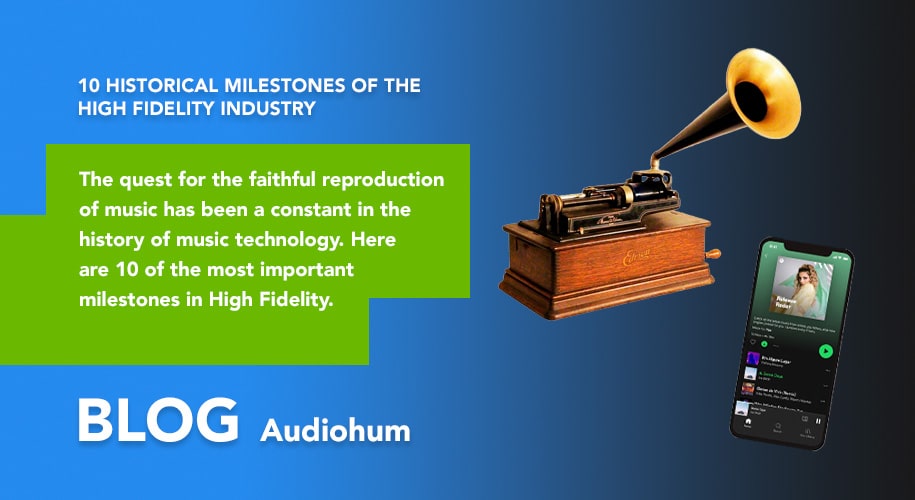
From the earliest days of sound recording to the digital age of today, the quest for high quality audio reproduction has been a constant in the history of technology. High fidelity, or hi-fi, has evolved over the years through a series of innovations that have transformed the way we listen to music and experience sound. Here are the 10 most important milestones in the history of hi-fi, and we warn you that not all of these milestones can be said to have been a breakthrough in terms of playback quality:
1. Invention of the Phonograph (1877)
The invention of the phonograph by Thomas Edison in 1877 was a crucial milestone for the audio industry and has a significant place in the history of high fidelity. Although the first phonographs were primitive in terms of sound quality, they laid the foundation on which all sound reproduction technology would develop. Here are some key points about their impact on high fidelity:
Concept of sound reproduction: The phonograph introduced the idea of recording sounds and then playing them back, which is the essence of what we know today as high-fidelity audio. Before the phonograph, the only way to experience music was live.
Technological innovation: Although the original phonograph recorded sounds on a tin cylinder, this concept evolved into more advanced and higher quality media, such as vinyl records. This allowed for better sound quality and greater durability.
Evolution of the audio market: The phonograph was the precursor to a series of innovations including the gramophone, record players and eventually modern hi-fi systems. Each step in this evolution brought improvements in sound quality, bringing us closer to the ideal of high fidelity, which is to reproduce sound as closely as possible to the original.
Inspiration for future technologies: The existence of the phonograph inspired other sound-related technologies, including radio, magnetic recording, and eventually the phonograph.
.
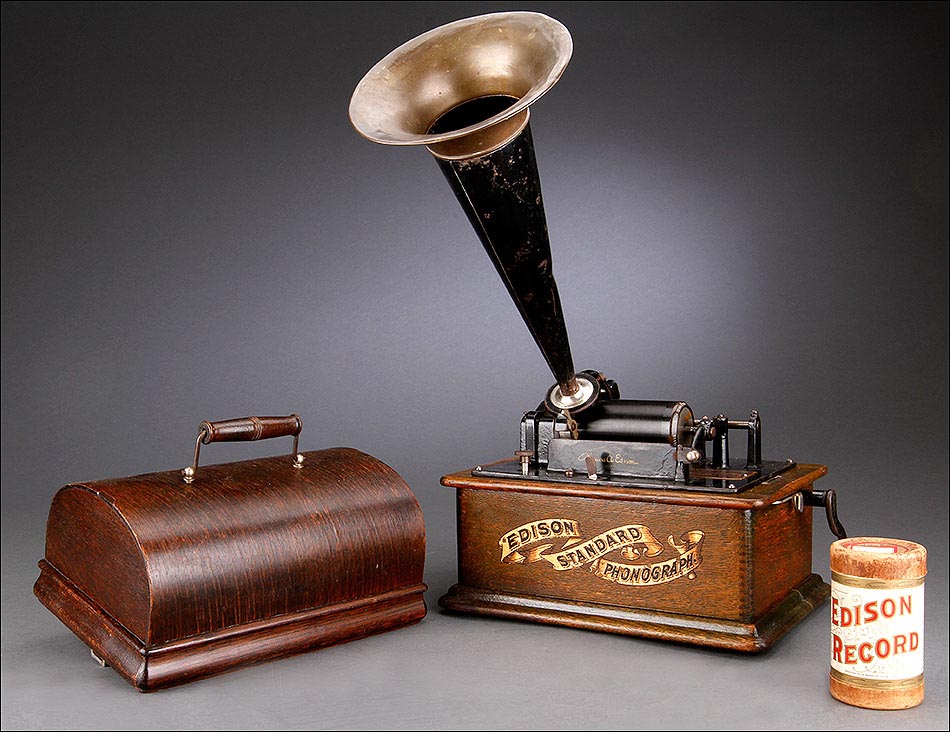
2. Development of the Gramophone Disc (1887)
The gramophone record, invented by Emile Berliner in 1887, replaced Edison's cylinders with flat vinyl records. This innovation allowed for more consistent and durable sound reproduction, laying the foundation for the modern recording industry.
Here are some key aspects of its importance:
Improved sound quality: gramophone records offered significantly better sound quality than the phonograph cylinders that preceded them. This was due in part to the material used to make the records, initially shellac and then vinyl, which allowed for clearer and more durable recordings.
Standardisation: Gramophone records helped standardise both the recording format and the playback devices. 78 RPM records became the industry standard for many decades before gradually being replaced by LP (Long Play) and 45 RPM singles, which further improved sound fidelity.
Innovation in sound reproduction: The ability of gramophone records to store more music and in better quality led to continuous innovations in playback equipment. Gramophones evolved to include better styli, more accurate arms and amplification systems that enhanced the listening experience.
Accessibility and proliferation of music: Like the phonograph, the gramophone allowed people to enjoy recorded music in their own homes, expanding access to a variety of music that was previously much more limited. This further democratised access to culture and entertainment.
Basis for future innovations: The gramophone and its records laid the foundation for future improvements in sound fidelity. Advances in recording technology, from vinyl records to CDs and digital formats, have built on the basic principles introduced with gramophone records.
.
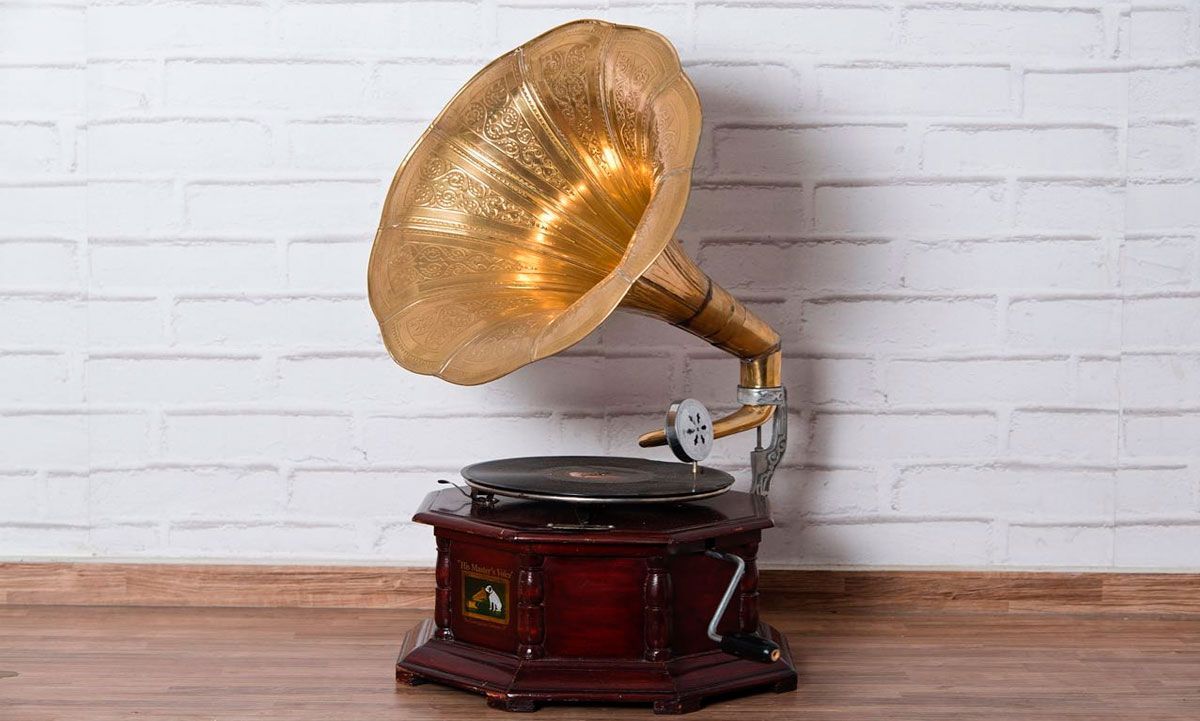
3. Introduction of Long Playing Records (LP) (1948)
Created by Columbia Records, long-playing records (LPs) revolutionised the way music was listened to. Capable of holding more music than 78 RPM records, LPs offered more faithful sound reproduction and a longer playing time.
Here are some of the highlights of their impact:
Longer life and higher quality: LPs were designed to play at a speed of 33 1/3 revolutions per minute (RPM), which allowed a single record to hold up to 22 minutes of music per side, far more than 78 RPM records. This not only increased the amount of music that could be enjoyed without interruption, but also significantly improved the sound quality.
Technological innovations: LPs were made of vinyl, a material that allowed for a finer groove and less background noise than the shellac used in 78 RPM records. Vinyl was also more durable and flexible, reducing the risk of damage during handling and playback.
Improved audio fidelity: The introduction of LPs coincided with advances in recording and playback technology, including the development of magnetic recording and advances in electronics that allowed for improvements in amplifiers and speakers. This contributed to a much higher fidelity listening experience, where the recorded sound could be reproduced at a quality much closer to the original.
Popularisation of stereo: Although LPs were initially monaural, technology quickly evolved to allow stereo recordings. This was crucial to the high-fidelity experience, as stereo sound offers a more accurate and natural representation of the acoustic space, greatly enhancing listener immersion.
Cultural impact: LPs allowed artists to explore longer formats, such as concept albums, that would not have been possible with shorter formats. This changed the way artists and audiences thought about recorded music, elevating the album to an art form in its own right.
Basis for the modern era of music: LPs established a format that would be dominant for decades, until the advent of digital music. Even today, in an era dominated by digital, vinyl records enjoy a resurgence in popularity due to their perceived sound quality and their aesthetic and tactile value.
.
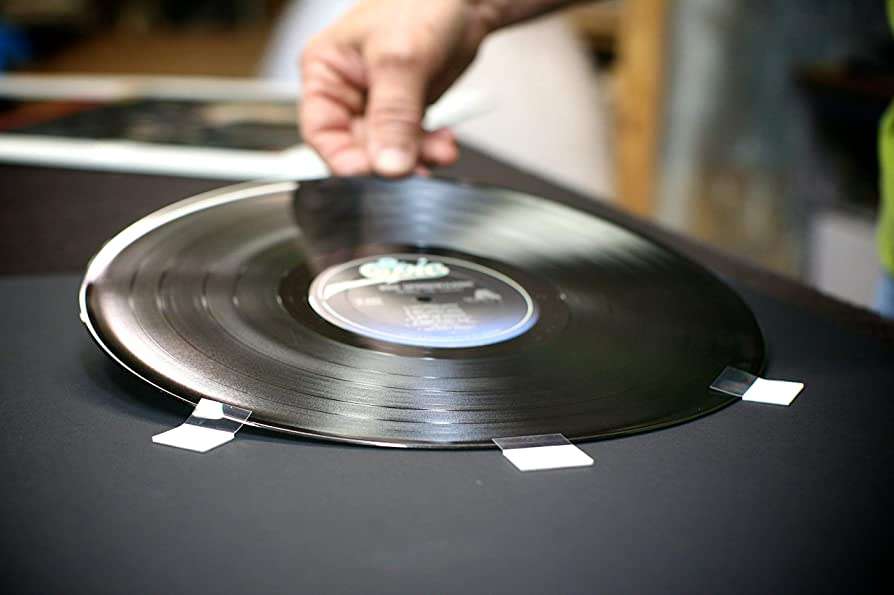
4. Launch of the Stereo (1958)
Stereo audio has been vitally important to the development of hi-fi, as it provides a much richer and more immersive listening experience compared to mono sound. Here are some of the most significant aspects of how stereo audio has influenced high fidelity:
Imitation of the human ear: Stereo mimics the way humans naturally perceive sounds in the environment. By recording and playing back different audio channels for each ear, stereo audio creates a sense of direction and space, making the listening experience more natural and realistic. This is fundamental to high fidelity, which aims to reproduce sound as closely as possible to the original experience.
Improved sound localisation: In a stereo recording, instruments and voices can be placed in different positions within the sound field, allowing listeners to discern the specific location of sound sources. This not only improves the clarity of the audio, but also enriches the texture and depth of the music.
Expansion of artistic creativity: Stereo allowed artists and producers to explore new creative ways of presenting their music. In recording, stereo became an artistic tool, allowing complex mixes and effects that would be impossible in mono. This has been particularly evident in genres such as psychedelic rock, jazz and classical music, where space and sound placement are crucial to the emotional impact of the music.
Evolution of playback technology: The development of stereo audio drove innovation in sound reproduction technology, including the design of loudspeakers, amplifiers and other audio system components. Equipment manufacturers began to design products that could faithfully reproduce the subtle nuances of stereo sound, thereby improving overall audio quality.
Industry standard: Since its adoption in the 1950s, stereo audio has become the de facto standard for most forms of audio-visual media, including music, film and television. The expectation of stereo audio is so universal that any deviation from this standard is generally considered inferior in terms of listening experience.
Resurgence and appreciation of vinyl: Even in the digital age, stereo audio is one of the reasons why many fans prefer vinyl records, which are prized for their ability to reproduce warm, detailed sound in stereo.
5. Appearance of the Cassette (1963)
The cassette, developed by Philips in 1963, provided a portable and convenient way to record and play back music. Although it initially offered inferior sound quality, the cassette became a popular format for music on the move.
The cassette played several crucial roles in the evolution of audio and had important cultural impacts. Here are some key points:
The main advantage of the cassette was not initially the fidelity of the sound, but its portability and accessibility. It allowed users to record, erase and re-record audio easily and inexpensively, which democratised access to recorded music and the creation of home audio.
Throughout the 1970s and 1980s, significant improvements were made to cassette technology. Innovations such as the development of new tape formulations and noise reduction systems (e.g. Dolby B and C) greatly improved sound quality. These improvements made the cassette more compatible with high fidelity standards.
Cassettes enabled new ways of consuming music, such as the popularisation of home recording and the mixing of songs on personalised tapes ("mixtapes"). This changed people's relationship with music, making it more personal and direct.
The cassette was crucial to the development of portable music devices, the Sony Walkman being the most iconic example. This allowed people to take their music anywhere, which revolutionised the way music was integrated into everyday life.
Although cassettes never matched the sound quality of vinyl or CDs in terms of pure fidelity, their popularity put pressure on the industry to improve and adapt other high-fidelity formats to the changing needs of consumers, such as portability and ease of use.
The cassette format is still celebrated today for its aesthetics and the nostalgia it evokes, even though technology has advanced much further in terms of sound quality.
.
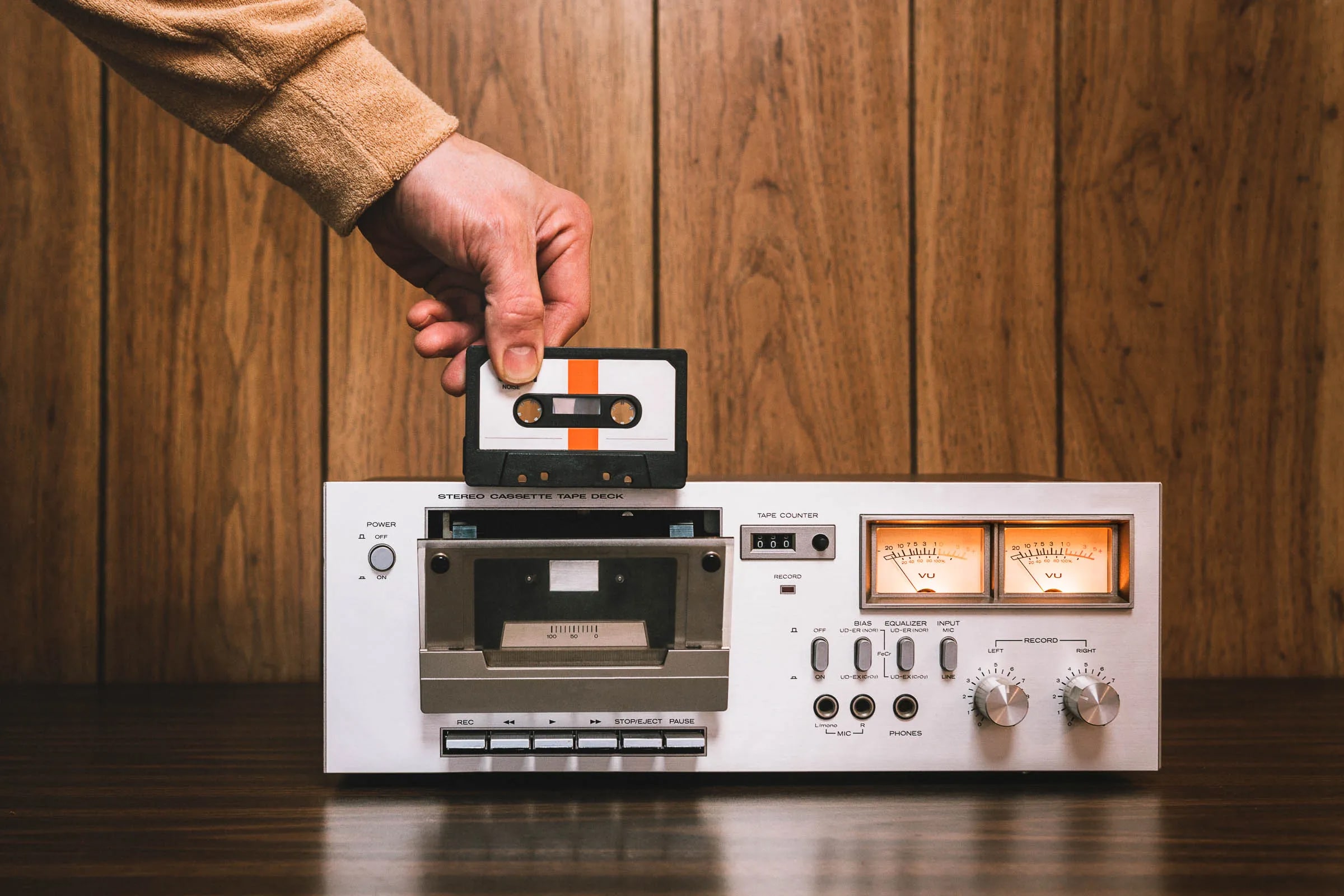
6. Arrival of the Compact Disc (CD) (1982)
The launch of the CD by Sony and Philips in 1982 marked the beginning of the digital era in audio reproduction. With its ability to store music digitally and offer superior sound quality, the CD quickly replaced vinyl and cassette as the dominant format.
Here are some key points about the importance of the CD in high fidelity:
Superior sound quality: CDs offer clearly superior sound quality compared to earlier formats such as vinyl and cassette. With a sampling rate of 44.1 kHz and a depth of 16 bits, CD provides a very clean and accurate sound reproduction, free of the noise and distortion typical of analogue media.
Consistency and durability: Unlike vinyl and cassettes, which can deteriorate over time due to physical factors such as wear and tear and environmental contamination, CDs are much less susceptible to such degradations. This means that sound quality remains constant over time, a crucial aspect of high fidelity.
Audio digitisation: The introduction of the CD popularised audio digitisation. This transformation not only improved sound quality but also facilitated innovations in the way music is handled and distributed. The digital era opened up new possibilities in music production, from editing to mixing and mastering.
Impact on the music industry: The CD transformed the music industry, influencing everything from production and distribution to music consumption. It provided a new platform that would eventually bring music to a wider and more accessible global market.
High fidelity audio standard: For decades, the CD was the gold standard for high fidelity home audio. Its ability to reproduce high quality sound was embraced by audiophiles and consumers alike, making it a favoured medium for critical listening and musical enjoyment.
Bridge to the digital age: The CD played a key role in bridging the gap between physical media and the future of digital music. It was instrumental in the transition to music downloading and online streaming, setting a precedent for formats such as MP3 and streaming services.
7. MP3 Development (1993)
The development of the MP3 format has been significant for music and audio technology, although its relationship to high fidelity is complex. Although MP3 was not initially designed to meet high fidelity standards, because it is a lossy compression format, it has greatly impacted the way we access and consume music.
MP3 uses a method of audio compression that significantly reduces file size by removing parts of the sound that, according to psychoacoustic theory, are less perceptible to the human ear. This allows a much larger amount of music to be stored on digital devices and facilitates online streaming.
One of the biggest impacts of MP3 has been its ability to make music extremely accessible and portable. Users can store thousands of songs on a small device, such as an MP3 player or smartphone, and access them anytime, anywhere. This radically changed music consumption.
The sound quality of MP3 files can vary widely, depending on the bit rate used during compression. At higher bit rates, the sound quality is better and closer to high fidelity, although it never reaches CD quality due to the nature of lossy compression. At lower bit rates, sound quality is sacrificed for file size.
MP3 transformed the music industry, facilitating digital distribution and giving rise to downloading and streaming services. It also played a role in the decline in the sale of physical media such as CDs and contributed to complex issues related to copyright and music piracy.
MP3 provoked considerable debate about sound quality. While some audiophiles criticised the format for its inferiority compared to CDs and other hi-fi formats, many consumers appreciated the convenience it offered, leading to a decline in the perceived importance of hi-fi among the general public.
MP3 paved the way for the development and adoption of other lossy compression formats, such as AAC, which offer better sound quality at similar or lower bit rates. It also spurred interest in lossless formats such as FLAC, which provide high fidelity sound quality without compression.
8. Introduction of DVD-Audio and SACD (1999)
DVD-Audio and Super Audio CD (SACD) were launched in 1999 as high-resolution formats designed to offer superior sound quality to conventional CD. Although they did not achieve the same popularity as CD, these formats set a standard for high-fidelity audio playback.
Both formats offer a much higher audio resolution than the traditional CD. DVD-Audio can support up to 24-bit depth and a sampling rate of up to 192 kHz, while SACD uses Density Pulse Modulation (DSD) which has a much higher sampling rate than the standard PCM used on CDs and DVD-Audio. This higher resolution allows for more accurate sound reproduction and extended dynamic range.
Both DVD-Audio and SACD support multi-channel audio, which means they can store and play surround sound. This is ideal for applications such as home cinema, where the ability to produce surround sound significantly enhances the viewing and listening experience.
These formats also offer greater durability and flexibility compared to traditional CDs. They can contain multiple layers of data, allowing users to choose between different audio modes (e.g. stereo or multi-channel) and sometimes even between different resolutions.
DVD-Audio and SACD have tended to occupy a niche market, aimed primarily at audiophiles and consumers with high-end home entertainment systems. They did not achieve mass adoption due to several factors, including higher costs, the need for specific compatible equipment, and competition from other more accessible digital formats.
Although never as widespread as CD, these formats have influenced the industry by setting a standard for what is possible in terms of digital audio quality. They have demonstrated that there is a market for high-resolution music and have pushed the industry towards innovations in sound quality.
While DVD-Audio and SACD did not become the de facto standard for music playback, they paved the way for the adoption of high-resolution streaming technologies that offer comparable quality without the need for physical media.
9. Emergence of High Quality Streaming (2000s)
With the advent of high-speed Internet, streaming music in hi-fi quality became a reality. Streaming services such as Tidal, Qobuz and Deezer HiFi have played a significant role in the evolution and popularisation of hi-fi in the digital age. These services have made hi-res music more accessible to the general public, combining the convenience of streaming with the sound quality traditionally reserved for premium physical formats or digital downloads.
10. Vinyl Revival and the Resurgence of Analogue Equipment (2010s)
In recent decades, there has been a resurgence of interest in vinyl and analogue equipment. Sound lovers seek the warmth and authenticity of vinyl, while manufacturers continue to produce high quality turntables and amplifiers to meet this demand.
Throughout history, the quest for high fidelity has been driven by innovation and the desire for an exceptional audio experience. From the early days of the phonograph to the digital age of today, these milestones have left an indelible mark on the way we listen to and appreciate music.
.
Since 2003, we at Audiohum have been selecting the best electronic components and devices for top quality music reproduction. We offer you a selection of what we consider to be the best commercial Hi-Fi and High-End devices and those that are excellent value for money.
Please contact us and we will be happy to advise you on how to make your purchase a success for your senses.
Phone: +34 637 880 948
Email: info@audiohum.com


